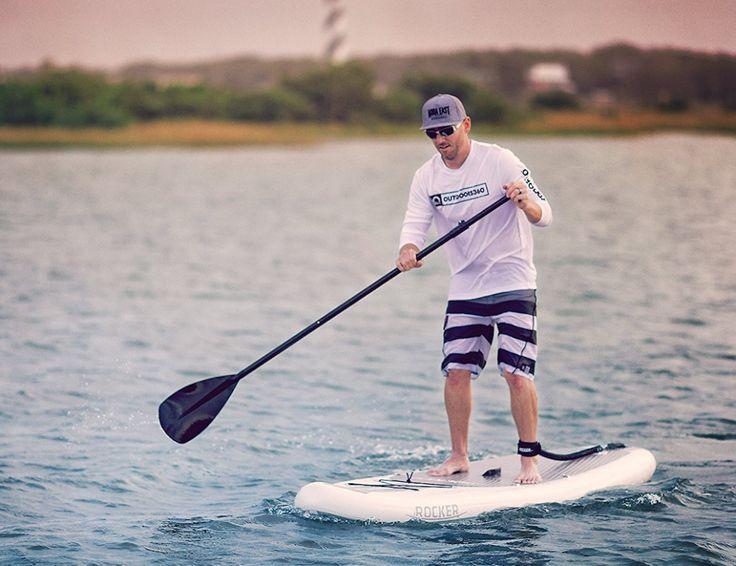Stand Up Paddleboard Market Segmentation and Competitive Landscape

The global stand-up paddleboard (SUP) market has grown rapidly over the past decade, driven by an increasing interest in outdoor activities, fitness, and eco-tourism. As we look ahead to 2030, understanding the Stand Up Paddleboard Market Segmentation and Competitive Landscape becomes critical for stakeholders looking to capture market share and identify future opportunities. This article delves into the segmentation of the market by product type, application, and geography, as well as the competitive dynamics shaping the industry.
Market Segmentation
The stand-up paddleboard market is diverse, with several segments contributing to the growth and expansion of the industry. Below is a breakdown of key market segments:
1. By Product Type
-
Inflatable Stand-Up Paddleboards (iSUPs)
-
Share: Dominates the market due to their portability, convenience, and ease of storage.
-
Key Benefits: Lightweight, durable, and easy to transport, making them ideal for recreational paddlers, beginners, and travelers.
-
Applications: Ideal for casual paddling, family activities, yoga, and fitness.
-
-
Rigid Stand-Up Paddleboards
-
Share: Holds a significant share, especially in performance-oriented segments.
-
Key Benefits: Superior stability, speed, and performance, making them the board of choice for advanced paddlers, racers, and surfers.
-
Applications: Racing, long-distance touring, competitive paddling, and surfing.
-
-
Specialty Paddleboards
-
Share: A rapidly growing segment.
-
Key Benefits: Custom-designed boards catering to niche needs such as fishing, tandem paddling, and SUP yoga.
-
Applications: Fishing SUPs are equipped with storage for fishing gear, while SUP yoga boards provide a larger, stable platform for exercise on water.
-
2. By Application
-
Recreational Paddling
-
Share: The largest segment.
-
Key Drivers: Accessible for beginners, families, and tourists, making it the most popular category globally.
-
Usage: Primarily used for leisure, sightseeing, and outdoor recreation.
-
-
Racing and Touring
-
Share: Strong growth, particularly in competitive markets.
-
Key Drivers: Increased interest in SUP racing events and long-distance paddling tours.
-
Usage: Designed for high-performance paddling, these boards are narrower and faster, providing an edge in races and endurance events.
-
-
Fitness and Yoga
-
Share: Growing segment as wellness trends continue to rise.
-
Key Drivers: The integration of yoga and fitness routines with paddleboarding as a low-impact yet effective workout.
-
Usage: SUP yoga boards offer stability and a larger surface area, while fitness-oriented boards cater to high-intensity workouts on water.
-
-
Fishing
-
Share: Niche but expanding.
-
Key Drivers: Growth in outdoor activities like fishing combined with the convenience of fishing from a paddleboard.
-
Usage: Equipped with mounts for fishing rods, coolers, and tackle boxes, fishing SUPs offer anglers a unique way to access hard-to-reach areas.
-
3. By End-User
-
Individual Consumers
-
Key Drivers: Increasing interest in water sports, fitness, and recreational activities.
-
Purchasing Trends: Driven by the desire for adventure sports and personal fitness, especially among millennials and Gen Z.
-
-
Commercial and Rental Services
-
Key Drivers: Growth in the rental market, particularly in tourist destinations, and increasing demand for rental fleets.
-
Applications: Paddleboard rental companies benefit from tourists, adventure travel operators, and local rental hubs offering SUPs for short-term use.
-
Competitive Landscape
The competitive landscape of the stand-up paddleboard market is dynamic, with several key players vying for dominance across regional and product segments. The market is characterized by a mix of well-established brands, regional players, and emerging startups offering innovative products. Here are the key aspects of the competitive landscape:
1. Key Market Players
-
Red Paddle Co.
-
A leader in the inflatable SUP segment, known for their innovative designs and commitment to durability and performance.
-
-
Naish
-
A prominent player offering both rigid and inflatable SUPs, catering to both recreational and performance markets.
-
-
Starboard
-
Renowned for high-performance boards and sustainability efforts, with a strong presence in both the racing and recreational segments.
-
-
Surftech
-
A key player in the rigid SUP market, Surftech is known for its advanced technology and partnerships with professional athletes.
-
-
BIC Sport
-
A well-established brand offering a wide range of paddleboards, with a focus on beginner and intermediate riders.
-
2. Emerging and Regional Players
-
Smaller brands and regional manufacturers are increasingly focusing on developing more affordable, eco-friendly, and customized SUP models to cater to local markets and niche segments.
3. Product Innovations
-
Companies are continuously innovating to stay ahead of the competition. Key trends include the development of lightweight, compact inflatable models, enhanced materials for stronger boards, and the integration of smart technology in paddleboards (e.g., GPS tracking, performance monitoring).
4. Distribution Channels
-
Online Retail: E-commerce is a significant driver of growth, with platforms like Amazon, eBay, and niche SUP-specific stores offering an extensive range of products.
-
Physical Retail and Rentals: Retail chains, specialized water sports stores, and paddleboard rental shops play a crucial role in driving sales, especially in tourist-heavy regions.
Conclusion
The Stand Up Paddleboard Market Segmentation and Competitive Landscape provide valuable insights into the current and future state of the industry. As demand grows across regions, companies will need to innovate continually to meet the needs of both performance-focused paddlers and recreational users. Meanwhile, the competitive environment remains dynamic, with established brands, emerging players, and niche market trends shaping the future of the market.
- Art
- Causes
- Crafts
- Dance
- Drinks
- Film
- Fitness
- Food
- Games
- Gardening
- Health
- Home
- Literature
- Music
- Networking
- Other
- Party
- Religion
- Shopping
- Sports
- Theater
- Wellness


